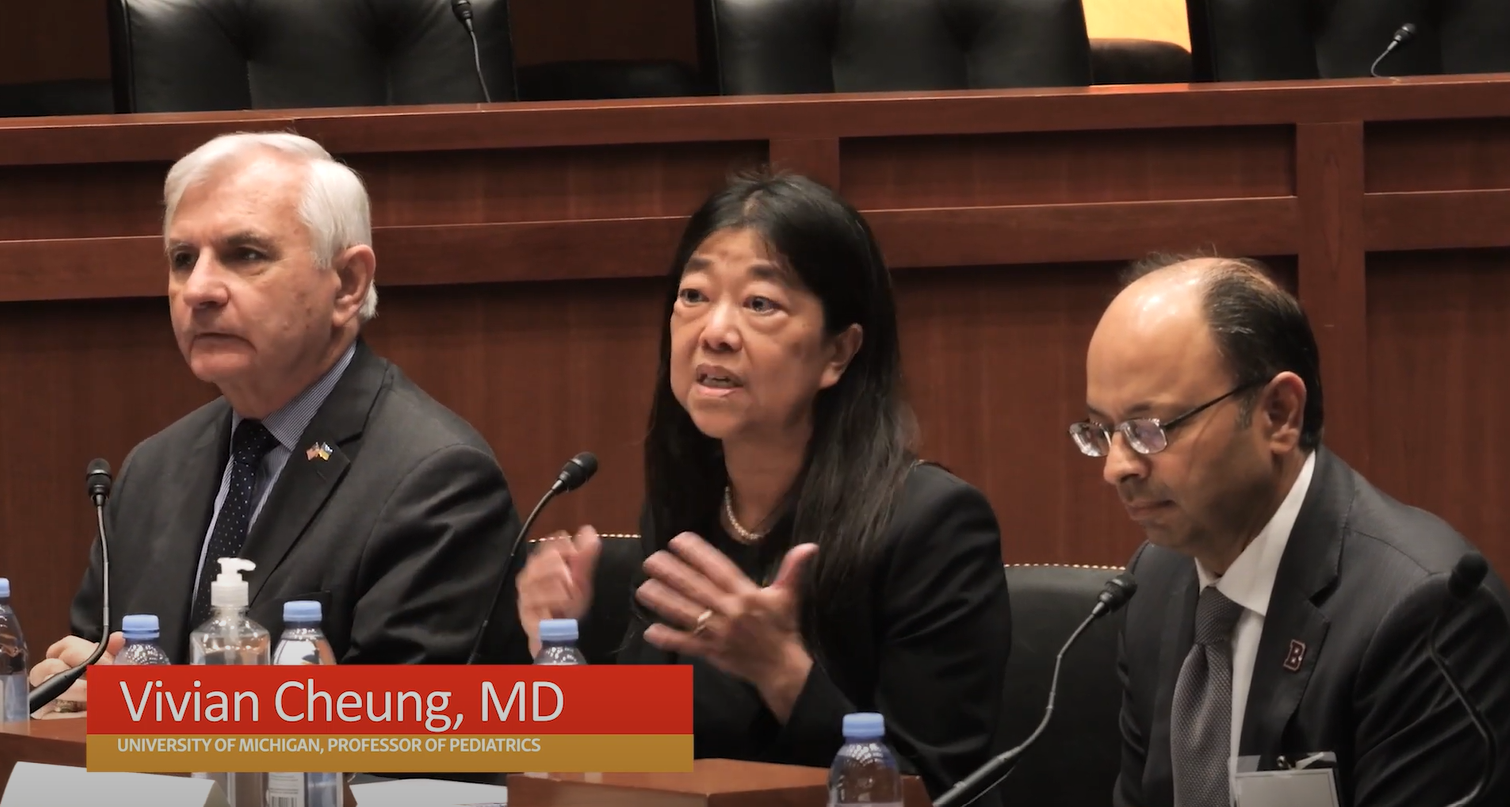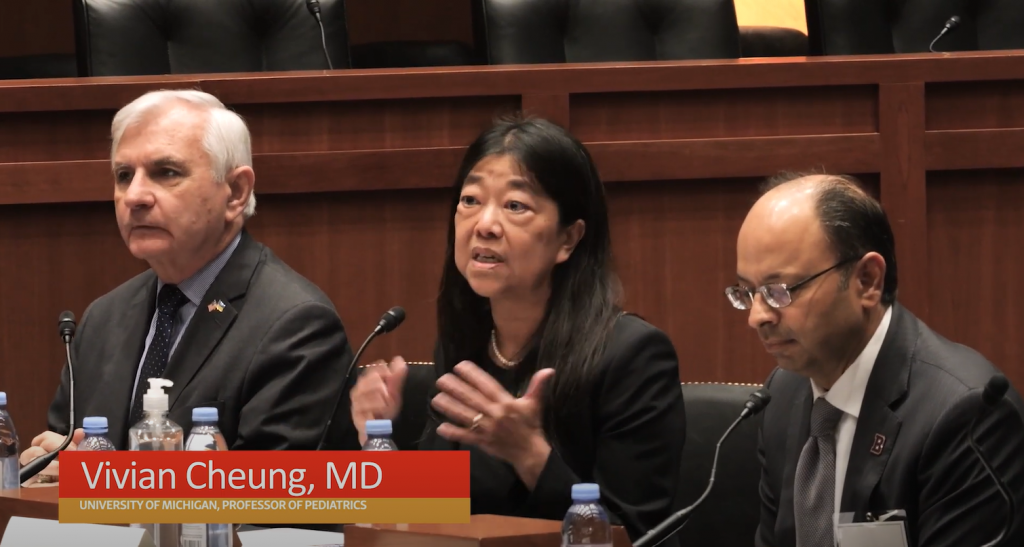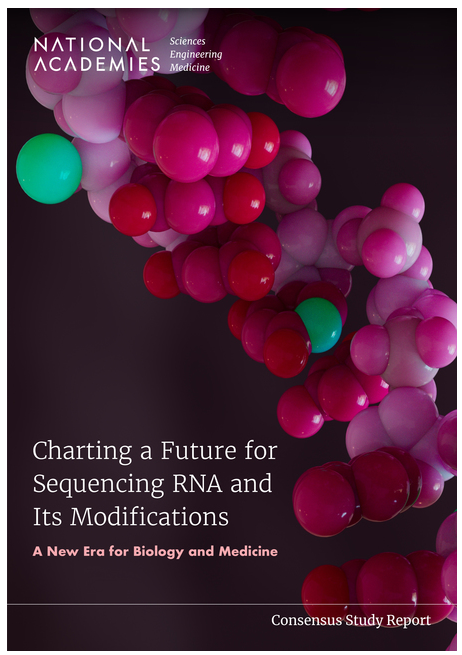“Dr. Cheung goes to Washington!”
Michigan Medicine’s Vivian Cheung and fellow RNA heavy hitters from science and medicine lay out the Human RNome Project roadmap at landmark Congressional Briefing
BY PAUL AVEDISIAN
On May 8, 2024, Vivian Cheung, M.D., Professor of Pediatrics, University of Michigan, delivered the welcoming remarks at a Congressional Briefing, “The Urgent Need to Advance RNA Science,” in the Hart Senate Office Building in Washington, D.C., setting the table for the panel talks presented by a veritable who’s who of the RNA science and medicine world.
“The purpose of this meeting was to brief policymakers and representatives from Congress on the enormous potential RNA holds not just for vaccines or medicine, but for agriculture, data storage, sustainability, and even national security,” Dr. Cheung said. “RNA can be used to make crops more drought- and heat-resistant; to store massive amounts of information that would take little energy to maintain; to encrypt highly sensitive U.S. Government data; to detect RNA-based bioweapons; and to treat the nearly 10,000 rare and genetic diseases for which there are no current medicines.”
Dr. Cheung has been the driving force behind The Human RNome Project. The grassroots project started by Dr. Cheung and fellow RNA biologists aims to mirror the Human Genome Project and sequence RNA with its mix of complete alphabets, and to build the infrastructure for an RNA-based bio-future.
The National Academies released a new consensus report in March, supported by the Warren Alpert Foundation and the National Institutes of Health. The Report gave its full endorsement, outlining a workable roadmap for RNA sequencing.
The idea for the briefing came about after Dr. Cheung and U.S. Senator Jack Reed (D-RI), with whom she had been working closely on advancing our nation’s RNA science, discussed showcasing the broad impact of RNA. The project committee sprung into action.
Co-sponsored by The Warren Alpert Foundation and Brown University, the Congressional Briefing was an initial step in getting the message across to key decision-makers in Washington that RNA science is indeed “The New Frontier, and we have to be leaders of that frontier,” as Senator Reed aptly put it in his introductory remarks, referencing then-Senator John F. Kennedy’s iconic remarks decades earlier.
Dean Mukesh Jain, M.D., of Brown University’s School of Medicine and Biological Sciences followed Dr. Cheung’s and Senator Reed’s introductions, presenting four of the nation’s foremost RNA scientists including Dr. Drew Weissman, Nobel Prize laureate and Center for RNA Biomedicine 2024 RNA Symposium keynote speaker. Olgica Milenkovic (University of Illinois), Brian Gregory (University of Pennsylvania), and Ryan Morhard (Ginkgo Bioworks) rounded out the panel of experts organized by Dr. Cheung, each speaking about how RNA could be applied to full effect in these key sectors, moderated by Fred Tyson of the National Institutes of Health
In attendance were Hill staffers from the offices of U.S. Senators and Representatives, including Congressman Dan Kildee of Michigan’s Eighth District; professionals from nonprofit corporations such as Research America and BIO, and faculty and staff from several prominent academic institutions.
Dr. Cheung believes the Congressional Briefing will firmly ensconce RNA science on D.C.’s short-range radar, underscored by the National Academies’ report recommending that different federal agencies should be in charge of various components of the project. “For instance, the National Institute of Standards and Technology (NIST) would be responsible for creating a standard, because we all need standards, and the NIH for the development of new technologies,” Dr. Cheung explains. “The White House Office of Science and Technology Policy (OSTP) would be the overseeing “conductor,” ensuring everything comes into place properly.”
RNA has approximately 200 letters compared to DNA’s four, making the task of mapping the entire human “RNome” all that much more daunting an exercise. Right now the letters are not complete, and to harness the full potential of RNA they must be complete.
To illustrate, Dr. Cheung printed the full briefing agenda on both sides of one sheet of paper. One side had all the letters (Figure 1); one side had missing letters, making it very difficult to read (Figure 2). That’s the side she wanted face-up on attendee’s chairs. She proved her point.
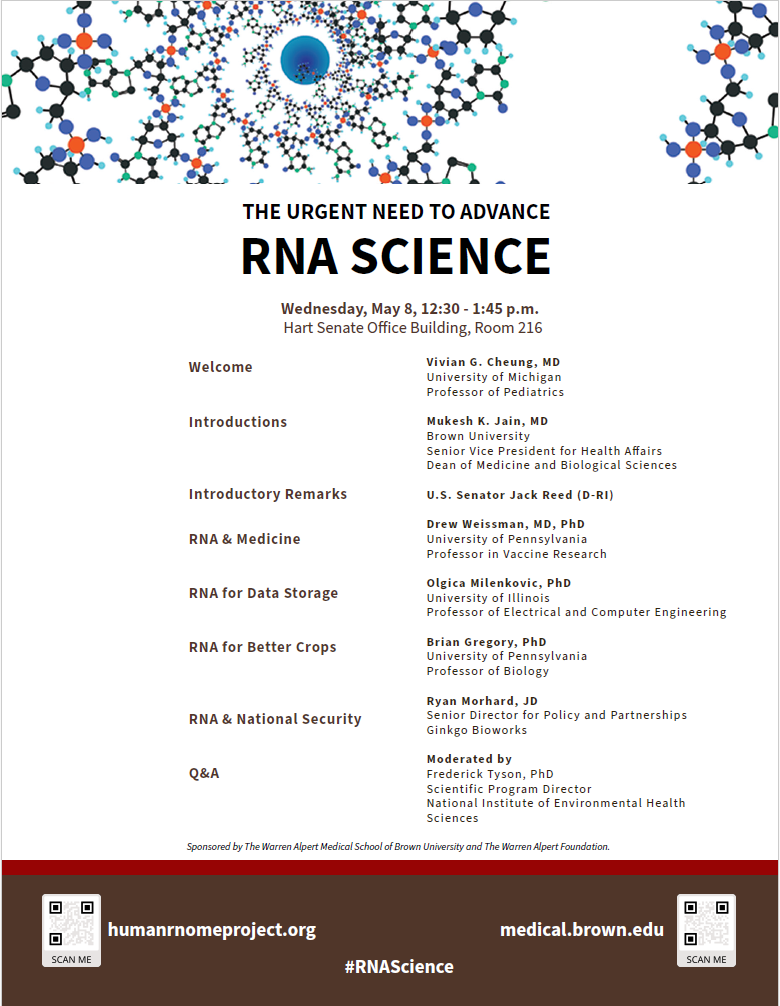
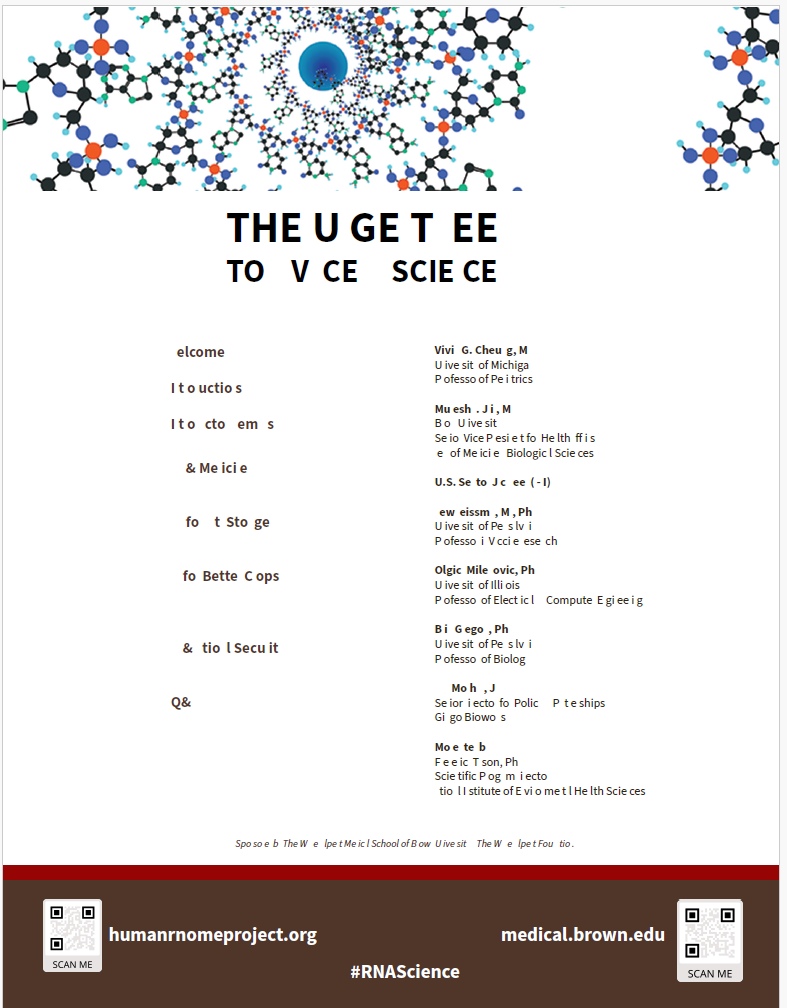
RNA has approximately 200 letters compared to DNA’s four, making the task of mapping the entire human “RNome” all that much more daunting an exercise. Right now the letters are not complete, and to harness the full potential of RNA they must be complete. To illustrate, Dr. Cheung printed the full briefing agenda on both sides of one sheet of paper. One side had all the letters; one side had missing letters, making it very difficult to read. That’s the side she wanted face-up on attendee’s chairs. She proved her point.
“If we do what the report recommends, we will have better crops,” Dr. Cheung reports. “RNA medicine can be delivered to crops, or to the pests damaging the crops. That’s already being done, but it’s expensive. So, how do we make that accessible to everyone, so that we can secure the food supply for the U.S. and for the rest of the world?
And current data storage farms suck up huge amounts of energy. But if all the information in the entire world were stored in the letters in DNA, and RNA, it would fit in something the size of an English tea cup. And it’s so stable you don’t need electricity. You could store it in your garage, under cold conditions, and it would be fine.”

And current data storage farms suck up huge amounts of energy. But if all the information in the entire world were stored in the letters in DNA, and RNA, it would fit in something the size of an English tea cup. And it’s so stable you don’t need electricity. You could store it in your garage, under cold conditions, and it would be fine.”
The problem is in retrieving that information fast enough, and that’s what RNA sequencing would accomplish as described in the report. Dr. Cheung emphasizes, “Developing the technology to read the information stored in the letters quickly and accurately is a key next step, together with gathering a workforce of people to thrive in a future where RNA is the main currency, and establishing national ‘hubs’ that are at the forefront of RNA science and medicine. Just imagine if the University of Michigan had a manufacturing plant for all these RNA components – data storage, medicine, agriculture, etc.”
Funding remains a priority. But the Congressional Briefing brings the Human RNome Project that much closer to its goal, by educating the right policymakers on the funding bills they need to write and pass so they fully understand what the money will be used for.
Dr. Cheung describes her role as the great convener – reaching out to universities and companies, connecting people and resources, and organizing events such as the Congressional Briefing to plant the stake of RNA science and medicine firmly in fertile soil to flourish and thrive.

